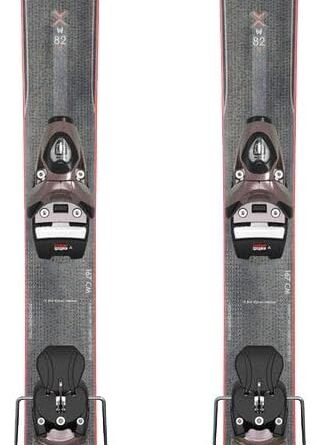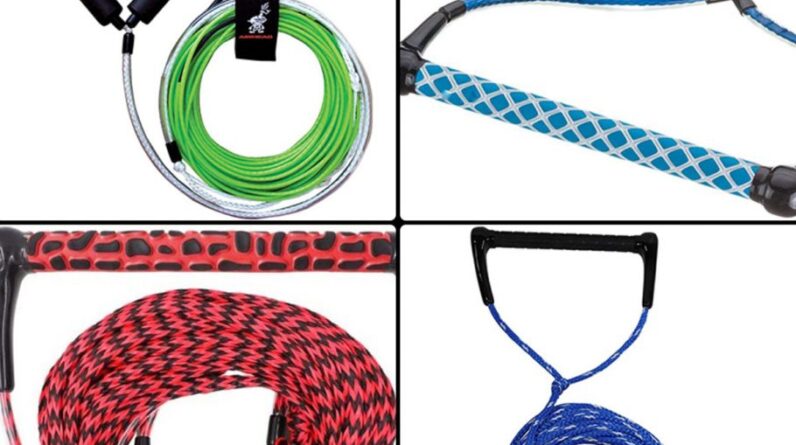
Are you an avid slalom skier looking to elevate your performance on the water? Look no further! This article serves as your ultimate guide to choosing the perfect water ski rope for slalom skiing. From the right size to the ideal style, we have all the tips and tricks to help you find your ideal ski rope. So, grab your life jacket, hop on your skis, and let’s dive into the world of water ski ropes!
Considerations for Slalom Skiing
Slalom skiing requires precision and skill, and choosing the right water ski rope is an essential part of optimizing your performance. There are several factors to consider when selecting the perfect rope, including the length, diameter, material, handle type, stretch and flexibility, performance level, price range, durability and longevity, brand and reputation, and personal preference. In this comprehensive guide, we’ll explore each of these considerations in detail to help you make an informed decision that suits your specific needs.
Length of the Rope
Understanding the Ideal Length
The length of the water ski rope is crucial for achieving the optimal slalom skiing experience. It determines the width of the arc you create while cutting across the wake, which in turn affects your ability to maintain balance and control during turns and maneuvers. The ideal length depends on various factors, including your skill level, boat speed, and personal preference.
Standard Rope Lengths
Standard rope lengths for slalom skiing typically range from 60 to 75 feet. Beginners and recreational skiers often start with longer ropes, around 70 to 75 feet, to provide more room for error and wider turns. As you progress and become more proficient, shorter ropes, such as 60 to 65 feet, can provide tighter turns and greater challenge. It’s essential to experiment with different lengths to determine what works best for you.
Slope and Water Conditions
The slope and water conditions also influence the ideal rope length for slalom skiing. Steeper slopes and rough water surfaces often require longer ropes to provide additional stability and control. Conversely, flatter slopes and calm waters may allow for shorter rope lengths, enabling tighter turns and faster maneuvers.
Personal Skill Level
Your skill level plays a significant role in determining the appropriate rope length. Beginners and less experienced skiers generally benefit from longer ropes, as they provide a larger margin for error and allow for gradual improvement. Advanced skiers, on the other hand, may prefer shorter ropes to execute tighter turns and more challenging tricks. It’s important to consider your current skill level and anticipate your future progression when selecting the length of your slalom ski rope.
Diameter of the Rope
Importance of Rope Diameter
The diameter of the water ski rope affects its overall strength, durability, grip, and handling. It plays a vital role in ensuring a secure connection between the skier and the boat, preventing any slippage or loss of control during intense maneuvers. Choosing the right diameter is essential for maintaining control and maximizing performance.
Typical Diameter Options
Water ski ropes for slalom skiing generally come in diameters ranging from 1/4 inch to 3/8 inch. Thicker ropes, such as those with a 3/8 inch diameter, provide increased strength and durability, making them suitable for advanced skiers or those who prefer a firmer grip. Thinner ropes, like the 1/4 inch diameter, offer more flexibility and lighter weight, potentially enhancing maneuverability for intermediate or recreational skiers.
Grip and Handling
The diameter of the rope affects the grip and handling experience during slalom skiing. Thicker ropes provide a more substantial grip, making it easier to maintain control and execute precise maneuvers. Thinner ropes, on the other hand, offer a lighter and more agile feel, allowing for quicker turns and adjustments. Consider your personal preference and skill level when deciding on the rope diameter that best suits your needs.
Strength and Durability
Thicker ropes generally offer greater strength and durability, able to withstand more tension and wear over time. If you are an advanced skier or regularly participate in high-intensity slalom skiing, opting for a thicker rope can provide added peace of mind and longevity. However, it’s essential to strike a balance between diameter and flexibility to ensure optimal performance without compromising maneuverability.
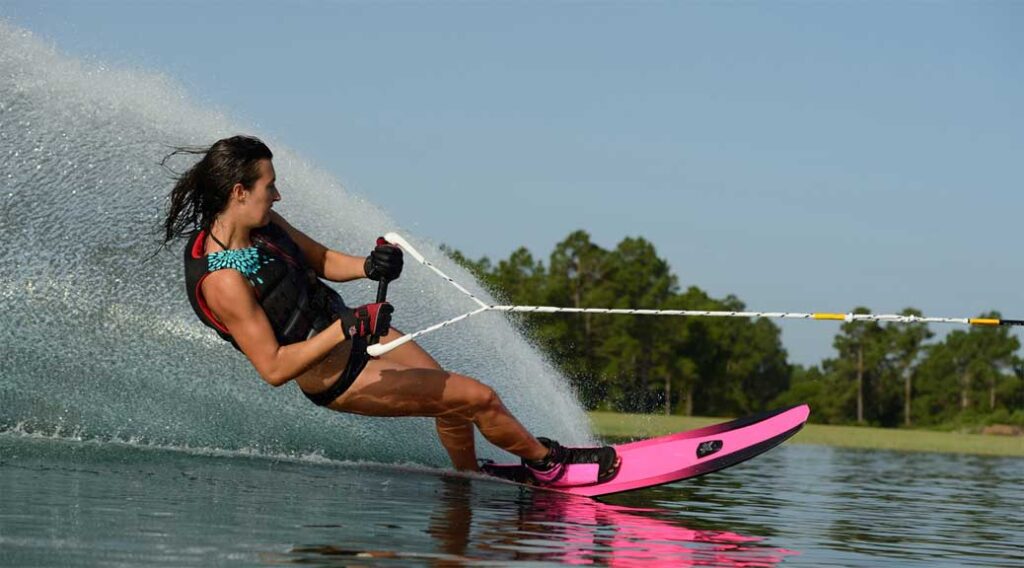
This image is property of www.tallingtonlakesproshop.com.
Material of the Rope
Choosing the Right Material
The material of the water ski rope directly impacts its overall performance, durability, and handling characteristics. There are various materials available, each with its unique properties and benefits. Understanding the different options can help you make an informed decision that aligns with your specific needs and preferences.
Nylon Ropes
Nylon ropes are a popular choice for slalom skiing due to their strength, durability, and resistance to abrasion. They offer excellent tensile strength and a degree of flexibility, allowing for smooth and controlled movements. Nylon ropes also tend to have good UV resistance, ensuring they can withstand extended exposure to sunlight without significant degradation.
Polyethylene Ropes
Polyethylene ropes are known for their excellent handling and soft feel. They offer a high degree of flexibility, making them suitable for skiers who prioritize maneuverability and responsiveness. Polyethylene ropes are often lightweight and provide a forgiving nature, making them ideal for beginners or those seeking a more comfortable skiing experience.
Polypropylene Ropes
Polypropylene ropes strike a balance between strength, flexibility, and affordability. They offer decent durability and a softer feel than nylon ropes, making them suitable for intermediate skiers or budget-conscious individuals. However, polypropylene ropes may not provide the same level of performance and longevity as nylon counterparts.
Mixed Materials
Some water ski ropes combine different materials to take advantage of the unique benefits and characteristics of each. These blended ropes may offer enhanced strength, durability, and flexibility, providing skiers with a versatile and reliable option. Consider mixed material ropes if you are looking for a balance of performance and affordability.
Handle Type
Different Types of Handles
The handle of a water ski rope is an essential component that directly influences grip, control, and comfort. Manufacturers offer various handle types, each designed to cater to different preferences and skiing styles. Understanding the different types of handles can help you choose the one that best suits your needs.
Straight Bar Handles
Straight bar handles are a classic design that offers a simple and straightforward grip. They typically feature a straight, rigid bar that provides a solid hold and allows for precise control during slalom skiing. Straight bar handles are versatile and suitable for skiers of all skill levels, making them a popular choice among recreational and intermediate skiers.
Triangular Handles
Triangular handles, also known as “T-bar” handles, provide an ergonomic grip that enhances comfort and maneuverability. They feature a triangular shape that conforms to the natural contours of the hand, reducing fatigue and improving overall control. Triangular handles are especially popular among professional skiers who prioritize performance and precision.
Ergonomic Handles
Ergonomic handles are designed with ergonomics in mind, offering a comfortable and secure grip. They often feature contoured shapes and additional padding or texture, providing a snug fit and reducing strain on the hands. Ergonomic handles are suitable for skiers seeking enhanced comfort during extended skiing sessions or those with hand or wrist sensitivities.
Adjustable Handles
Adjustable handles allow for customization, enabling you to modify the length of the handle based on your preference or skiing style. This feature can be particularly useful for skiers who prefer varying handle lengths for specific techniques or maneuvers. Adjustable handles offer versatility and adaptability, catering to a wide range of skiing preferences.
Grip Surface
The grip surface of a handle plays a crucial role in maintaining a secure hold and preventing slippage. Most handles feature a rubber or foam grip surface that provides traction and comfort. Rubber grips offer a firmer hold, especially when wet, while foam grips provide a softer and more cushioned feel. Consider the grip surface material and texture to ensure it enhances your overall skiing experience.
Handle Size
Handle size refers to the overall dimensions of the handle, including its length and diameter. Handle sizes vary to accommodate different hand sizes and personal preferences. A handle that is too large may result in decreased control and strain on the hands, while a handle that is too small can lead to discomfort and reduced grip. It’s important to select a handle size that feels comfortable and secure for your specific needs.
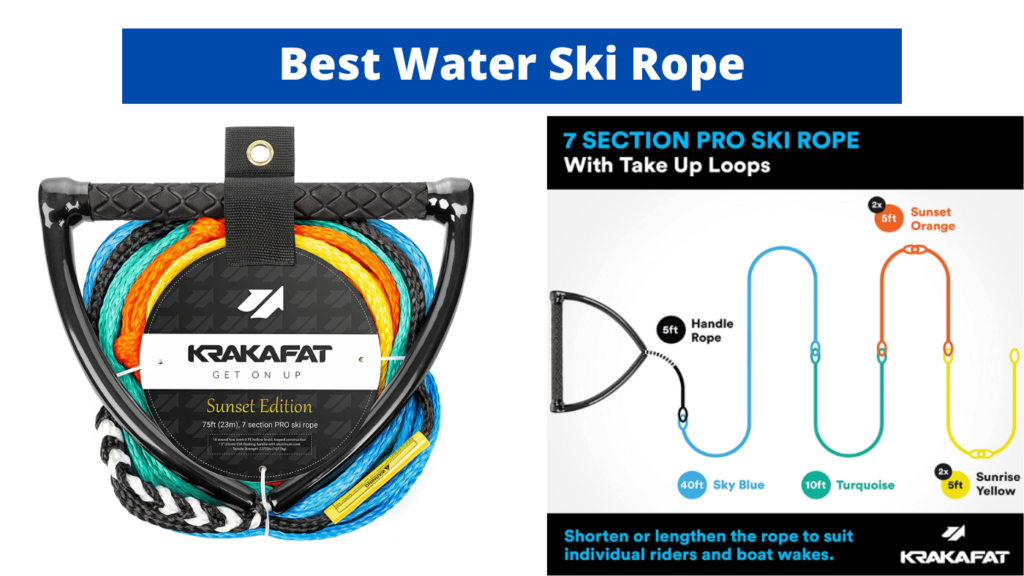
This image is property of jetskitips.com.
Stretch and Flexibility
Benefits of Stretch
Stretch is an essential consideration when choosing a water ski rope for slalom skiing, as it can greatly impact your overall performance. Rope stretch refers to the ability of the rope to elongate under tension, absorbing shocks and providing a smoother ride. Soft, controlled stretch can be advantageous, while excessive stretch may result in undesirable oscillations and reduced control.
Stretch Options
Water ski ropes are available in different stretch options, ranging from minimal stretch to significant elongation. Minimal stretch ropes offer a more direct transfer of energy, providing immediate response and feedback. These ropes are recommended for advanced skiers who require precise control and responsiveness. On the other hand, ropes with moderate stretch can provide a forgiving and enjoyable skiing experience, making them suitable for recreational and intermediate skiers.
Flexibility
Flexibility is closely related to stretch and refers to the rope’s ability to bend and adapt to changing conditions. Flexible ropes can absorb shock and vibrations, reducing strain on the skier’s body and enhancing overall comfort. Opting for a flexible rope can help enhance your slalom skiing experience, allowing for greater maneuverability and mitigating the risk of injuries or fatigue.
Impact on Performance
The stretch and flexibility of the water ski rope can significantly impact your performance on the water. Skill level, skiing style, and personal preference all play a role in determining the ideal amount of stretch and flexibility for your specific needs. It’s important to find a balance that allows for precise control and responsiveness while providing a comfortable and enjoyable skiing experience.
Performance Level
Recreational Skiers
Recreational skiers often prioritize comfort, fun, and a smooth skiing experience. They may prefer ropes with moderate stretch and flexibility, providing a forgiving nature and allowing for gradual skill development. A rope that offers durability and good value for money is essential, ensuring it can withstand regular use without compromising performance.
Intermediate Skiers
Intermediate skiers are typically seeking progression and improvement in their slalom skiing skills. They may prefer ropes with adjustable handles and good responsiveness, enabling them to experiment with different handle lengths and techniques. Ropes with moderate stretch and flexibility can provide a good balance between control and comfort, allowing for smoother turns and maneuvers.
Professional Skiers
Professional skiers require equipment that meets the highest standards and can withstand intense training and competitions. They often prioritize ropes with minimal stretch and high responsiveness, enabling precise control and rapid adjustments. Professional skiers may also consider custom handles and specialized features to accommodate their specific skiing styles and preferences.
Matching Rope to Skill Level
Matching the water ski rope to your skill level is vital for optimizing performance and safety. Consider your current ability and skiing goals when selecting a rope. As your skill level progresses, you may find that upgrading to a more advanced rope can enhance your overall experience and enable you to master new techniques.

This image is property of www.momjunction.com.
Price Range
Budget Considerations
Budget considerations are crucial when choosing a water ski rope for slalom skiing. There is a wide range of options available, varying in price based on their materials, features, and brand reputation. It’s important to establish a budget range that aligns with your financial means while still considering the quality and performance aspects you desire.
Quality vs. Cost
When it comes to water ski ropes, finding a balance between quality and cost is key. Cheaper ropes may provide a satisfactory experience for recreational skiers or beginners but may lack the durability and performance required by more advanced skiers. Investing in a higher-quality rope can offer greater longevity, improved handling, and enhanced overall performance.
Finding a Balance
Consider your specific needs and priorities when determining the right price range for your water ski rope. If you are a beginner or recreational skier, a mid-range rope that offers a good balance between affordability and quality may be suitable. Advanced skiers or professionals may choose to invest in higher-end ropes that deliver premium performance and longevity.
Durability and Longevity
Construction Quality
Durability and longevity are essential factors when evaluating water ski ropes for slalom skiing. Pay attention to the construction quality, including the stitching, material strength, and overall craftsmanship. Ropes with reinforced construction, such as double-braided or woven cores, tend to offer superior durability and resistance to wear and tear.
Resistance to Wear and Tear
Water ski ropes are exposed to various elements, including UV rays, water, and abrasive surfaces. Opt for ropes that exhibit resistance to wear and tear, ensuring they can withstand prolonged exposure to these conditions without deteriorating. High-quality materials, such as nylon or mixed materials, often provide increased resilience and longevity.
UV Resistance
UV resistance is particularly essential for water ski ropes, as they are regularly exposed to sunlight during outdoor use. Prolonged UV exposure can lead to degradation and reduced strength over time. Look for ropes with UV-resistant coatings or materials that can maintain their integrity even after extended periods of sun exposure.
Maintenance
Proper maintenance is crucial for extending the lifespan of your water ski rope. After each use, rinse the rope with fresh water to remove any salt or contaminants. Store it away from direct sunlight and harsh weather conditions to prevent unnecessary wear and degradation. Regular inspections for signs of damage or fraying are also essential to ensure the rope remains safe and reliable.

This image is property of sparewater.com.
Brand and Reputation
The brand and reputation of the water ski rope manufacturer should also be considered when making a purchasing decision. Well-established brands with positive reviews and a history of producing high-quality water ski ropes are more likely to deliver reliable and durable products. Research the reputation of different brands and read customer reviews to gain insights into their performance and customer satisfaction levels.
Personal Preference
Comfort and Feel
Personal preference plays a significant role when selecting a water ski rope for slalom skiing. Comfort and feel are subjective factors that may vary from person to person. Consider the grip, handle type, and diameter that feel most comfortable and secure for your hands and skiing style. Testing different options or seeking recommendations from fellow skiers can help you find the rope that best aligns with your preferences.
Design and Style
Water ski ropes come in various designs and styles, allowing you to express your personality and stand out on the water. Some ropes feature vibrant colors, unique patterns, or additional visual elements. While design and style may not directly impact performance, selecting a rope that resonates with your aesthetic preferences can enhance your overall enjoyment of the sport.
Color Options
Color options may seem like a minor consideration, but they can have practical implications as well. Brightly colored ropes can be more easily spotted in the water, increasing safety and visibility. Darker colors, on the other hand, may be less prone to showing signs of dirt or stains. Consider your personal preference and any specific needs when choosing the color of your water ski rope.
Additional Features
Some water ski ropes come with additional features or accessories that can enhance your overall experience. These may include storage bags, buoyancy aids, or specialized handle grips. Consider any supplementary features that may be beneficial to your skiing style or individual needs. However, remember that core performance and suitability should be the primary factors in your decision-making process.
Choosing the Perfect Water Ski Rope for Slalom Skiing
Selecting the right water ski rope for slalom skiing requires thorough consideration of various factors. The length, diameter, material, handle type, stretch and flexibility, performance level, price range, durability and longevity, brand and reputation, and personal preference all contribute to the overall suitability and enjoyment of your skiing experience. Take the time to research and test different options, seeking guidance from experienced skiers if needed. By finding the perfect water ski rope that aligns with your specific needs and preferences, you can maximize your performance, safety, and fun on the water.
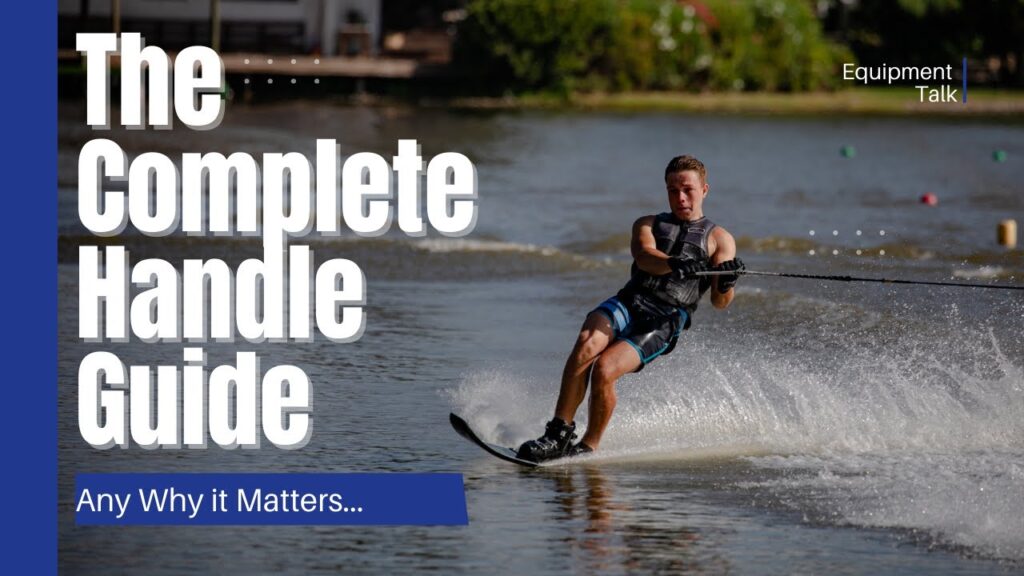
This image is property of i.ytimg.com.






